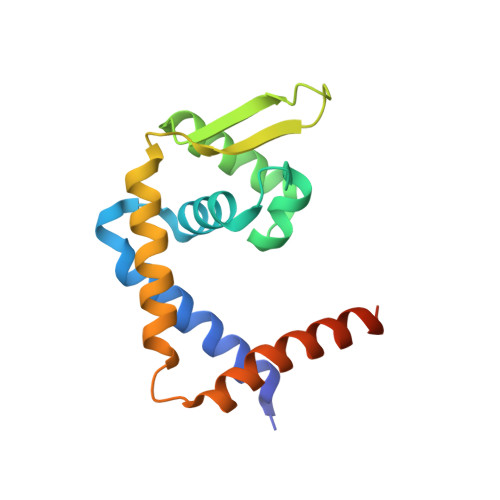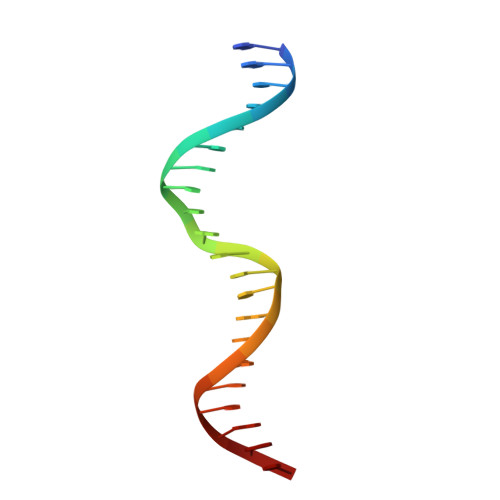Structural Basis for Intrinsic Thermosensing by the Master Virulence Regulator Rova of Yersinia.
Quade, N., Mendonca, C., Herbst, K., Heroven, A.K., Ritter, C., Heinz, D.W., Dersch, P.(2012) J Biol Chem 287: 35796
- PubMed: 22936808
- DOI: https://doi.org/10.1074/jbc.M112.379156
- Primary Citation of Related Structures:
4AIH, 4AIJ, 4AIK - PubMed Abstract:
Pathogens often rely on thermosensing to adjust virulence gene expression. In yersiniae, important virulence-associated traits are under the control of the master regulator RovA, which uses a built-in thermosensor to control its activity. Thermal upshifts encountered upon host entry induce conformational changes in the RovA dimer that attenuate DNA binding and render the protein more susceptible to proteolysis. Here, we report the crystal structure of RovA in the free and DNA-bound forms and provide evidence that thermo-induced loss of RovA activity is promoted mainly by a thermosensing loop in the dimerization domain and residues in the adjacent C-terminal helix. These determinants allow partial unfolding of the regulator upon an upshift to 37 °C. This structural distortion is transmitted to the flexible DNA-binding domain of RovA. RovA contacts mainly the DNA backbone in a low-affinity binding mode, which allows the immediate release of RovA from its operator sites. We also show that SlyA, a close homolog of RovA from Salmonella with a very similar structure, is not a thermosensor and remains active and stable at 37 °C. Strikingly, changes in only three amino acids, reflecting evolutionary replacements in SlyA, result in a complete loss of the thermosensing properties of RovA and prevent degradation. In conclusion, only minor alterations can transform a thermotolerant regulator into a thermosensor that allows adjustment of virulence and fitness determinants to their thermal environment.
Organizational Affiliation:
Department of Molecular Structural Biology, Helmholtz Centre for Infection Research, 38124 Braunschweig, Germany.
















